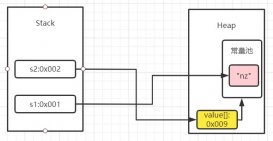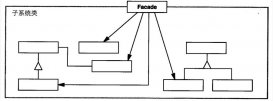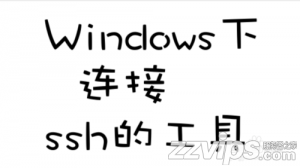前言
因?yàn)樵诿嬖嚨臅r(shí)候碰到幾次list的去重和排序,覺(jué)著有必要給大家總結(jié)一下具體的方法,分享出來(lái)供大家學(xué)習(xí)參考,話不多說(shuō)了,來(lái)一起看看下面介紹的一種做法:
一、list去重
1.1 實(shí)體類Student
List<Student>容量10k以上,要求去重復(fù)。這里Student的重復(fù)標(biāo)準(zhǔn)是屬性相同,因此需要重寫equals和hashcode方法,不知道有幾個(gè)可以手寫出來(lái)。
student的equals方法:
|
1
2
3
4
5
6
7
8
|
public void equals(Object o){ if(this == o) retun true; if(!(o instanceof Student)) return false; Student stu = (Studend)o; if(id!=stu.id) return false; if(age!=stu.age) return false; return name!=null ? name.equals(stu.name) : stu.name ==null; } |
這里只要記住宗旨是比較Student的屬性即可,如果屬性相同則相等。先考慮地址相等,然后類型匹配instanceof。接下來(lái)是各種屬性,int屬性直接雙等號(hào)比較,String類型需要判斷是否為null,如果是null則都是null返回true,如果不是null則比較equals。
student的hashcode方法:
|
1
2
3
4
5
6
|
public int hashCode(){ int result = id; reuslt = 31*id +(name!=null?name.hashCode():0); reuslt = 31*age; return reuslt;} |
hashCode是為了hash表計(jì)算做輔助,方便快速查找。因此hash算法的結(jié)果要盡量的散列。這里用到31,這個(gè)31在別的博客中看到的原因是這樣的: obj*31==obj<<5-obj.左移5位相當(dāng)乘以2的5次方,就是32.null的hashCode為空。
通過(guò)equals和hashCode的實(shí)現(xiàn)可以發(fā)現(xiàn),如果equals為true,則所有屬性相同,而屬性相同則計(jì)算出的hashCode必然相同。然而hashCode相同,屬性未必一樣,即equals不一定為真。
關(guān)于hashCode的價(jià)值體現(xiàn)并不在這里,而在于HashMap的實(shí)現(xiàn)。HashMap內(nèi)部是通過(guò)鏈表數(shù)組的hash結(jié)構(gòu)來(lái)實(shí)現(xiàn)的,這里就要用到hashcode。
下面是完整的Student代碼:
|
1
2
3
4
5
6
7
8
9
10
11
12
13
14
15
16
17
18
19
20
21
22
23
24
25
26
27
28
29
30
31
32
33
34
35
36
37
38
39
40
|
package com.test.arithmetic.listequals;/** * 這里id,name,age相同則Student相同, * 若有其他相同 * Created by Administrator on 2016/3/29. */public class Student { int id; String name; int age; public Student(int id, String name, int age) { this.id = id; this.name = name; this.age = age; } @Override public boolean equals(Object o) { if (this == o) return true; if (!(o instanceof Student)) return false; Student student = (Student) o; if (id != student.id) return false; if (age != student.age) return false; return name != null ? name.equals(student.name) : student.name == null; } @Override public int hashCode() { int result = id; result = 31 * result + (name != null ? name.hashCode() : 0); result = 31 * result + age; return result; }} |
1.2通過(guò)HashSet去重
如果你覺(jué)得自己可以hold住一個(gè)完善的hash算法就可以自己去實(shí)現(xiàn)它。這里采用jdk自帶的HashSet來(lái)完成重復(fù)獲取。
先放代碼:
|
1
2
3
4
5
6
7
8
9
10
11
12
13
14
15
16
17
18
19
20
21
22
23
24
25
26
27
28
29
30
31
32
33
34
35
36
37
|
package com.test.arithmetic.listequals;import org.junit.Assert;import java.util.*;/** * 取出list中重復(fù)的Student對(duì)象 * Created by Administrator on 2016/3/29. */public class ObtainListEquals { public static void main(String[] args){ //原始數(shù)據(jù) List<Student> list = new ArrayList<>(); //重復(fù)數(shù)據(jù) List<Student> list2 = new ArrayList<>(); //填充 for (int i = 0; i < 10 ; i++) { list.add(new Student(i,"_"+i,18+i)); Random random = new Random(); if (random.nextBoolean()){ list.add(new Student(i,"_"+i,18+i)); } } //使用hashset去重復(fù),set為重復(fù)的集合,可以通過(guò)new ArrayList(set)轉(zhuǎn)換成list HashSet<Student> set = new HashSet<>(); for (Student student : list) { boolean add = set.add(student); if (!add){ list2.add(student); } } //比較 Assert.assertEquals(list.size(),list2.size()+set.size()); }} |
去重的原理和簡(jiǎn)單,無(wú)論你僅僅是想把重復(fù)的丟掉,或者將重復(fù)的取出來(lái)。這里去掉的是第二次遇到的對(duì)象,取出的也是第二次遇到的對(duì)象。HashSet中的add方法會(huì)返回一個(gè)Boolean值,如果插入的值已經(jīng)存在,則直接返回false。關(guān)于hashset的源碼放到以后研究。大概的說(shuō),是通過(guò)HashMap的key來(lái)實(shí)現(xiàn)的,而HashMap在1.8中改動(dòng)很大,據(jù)說(shuō)是用紅黑樹實(shí)現(xiàn)的,提高了get的時(shí)間復(fù)雜度。
二、list對(duì)象排序
同樣list中存放的是Student對(duì)象,我需要一個(gè)規(guī)則來(lái)排序。這個(gè)排序的規(guī)則這里定義為id的比較大小。參考:java中l(wèi)ist排序
2.1 Student對(duì)象實(shí)現(xiàn)Comparable接口
Comparable接口提供一個(gè)比較的compareTo(Object o)方法,通過(guò)返回值>0,=0,<0比較大小。這里由于僅僅把id當(dāng)做比較大小的方法,直接用id做減法,如果是要比較對(duì)象,建議套用this.property.compareTo(o.property) .
|
1
2
3
4
5
6
7
8
9
10
11
12
13
14
15
16
17
18
19
20
21
22
23
24
25
26
27
28
29
30
31
32
33
34
35
36
37
38
39
40
41
42
43
44
|
package com.test.arithmetic.listequals;/** * 這里id,name,age相同則Student相同, * 若有其他相同 * Created by Administrator on 2016/3/29. */public class Student implements Comparable<Student>{ int id; String name; int age; public Student(int id, String name, int age) { this.id = id; this.name = name; this.age = age; } @Override public boolean equals(Object o) { if (this == o) return true; if (!(o instanceof Student)) return false; Student student = (Student) o; if (id != student.id) return false; if (age != student.age) return false; return name != null ? name.equals(student.name) : student.name == null; } @Override public int hashCode() { int result = id; result = 31 * result + (name != null ? name.hashCode() : 0); result = 31 * result + age; return result; } @Override public int compareTo(Student o) { return this.id-o.id; }} |
通過(guò)Collections.sort(list)排序:
|
1
2
3
4
5
6
7
8
9
10
11
12
13
14
15
16
17
18
19
20
21
22
23
24
25
26
27
28
29
30
31
32
|
package com.test.arithmetic.list.sort;import com.test.arithmetic.list.Student;import org.junit.Before;import org.junit.Test;import java.util.ArrayList;import java.util.Collections;import java.util.List;/** * 對(duì)list中對(duì)象排序 * Created by Administrator on 2016/3/29. */public class SortList { List<Student> list; @Before public void setUp(){ list = new ArrayList<>(); for (int i = 0; i < 10; i++) { int v = (int)(Math.random() * 100); list.add(new Student(v,"_"+v,18+v)); } System.out.println("原list:"+list); } //方法一,對(duì)象實(shí)現(xiàn)Comparable接口 @Test public void byImplements(){ Collections.sort(list); System.out.println("排序后:"+list); }} |
2.2 重載sort方法,傳入一個(gè)比較器
Student類還是未實(shí)現(xiàn)Comparable接口之前的:
|
1
2
3
4
5
6
7
8
9
10
11
12
13
14
15
16
17
18
19
20
21
22
23
24
25
26
27
28
29
30
31
32
33
34
35
36
37
38
39
40
41
42
43
44
45
46
47
48
49
50
51
52
53
54
55
56
|
package com.test.arithmetic.list;/** * 這里id,name,age相同則Student相同, * 若有其他相同 * Created by Administrator on 2016/3/29. */public class Student{ int id; String name; int age; public Student(int id, String name, int age) { this.id = id; this.name = name; this.age = age; } public int getId() { return id; } public Student(int id) { this.id = id; } @Override public boolean equals(Object o) { if (this == o) return true; if (!(o instanceof Student)) return false; Student student = (Student) o; if (id != student.id) return false; if (age != student.age) return false; return name != null ? name.equals(student.name) : student.name == null; } @Override public int hashCode() { int result = id; result = 31 * result + (name != null ? name.hashCode() : 0); result = 31 * result + age; return result; } @Override public String toString() { return "Student{" + "id=" + id + ", name='" + name + '\'' + ", age=" + age + '}'; }} |
在排序的代碼出添加排序規(guī)則:
|
1
2
3
4
5
6
7
8
9
10
11
12
13
14
15
16
17
18
19
20
21
22
23
24
25
26
27
28
29
30
31
32
33
34
35
36
37
38
39
40
41
42
43
44
45
46
|
package com.test.arithmetic.list.sort;import com.test.arithmetic.list.Student;import org.junit.Before;import org.junit.Test;import java.util.ArrayList;import java.util.Collections;import java.util.Comparator;import java.util.List;/** * 對(duì)list中對(duì)象排序 * Created by Administrator on 2016/3/29. */public class SortList { List<Student> list; @Before public void setUp(){ list = new ArrayList<>(); for (int i = 0; i < 10; i++) { int v = (int)(Math.random() * 100); list.add(new Student(v,"_"+v,18+v)); } System.out.println("原list:"+list); } //方法一,對(duì)象實(shí)現(xiàn)Comparable接口 @Test public void byImplements(){// Collections.sort(list); System.out.println("排序后:"+list); } /*方法二,添加比較器*/ @Test public void byOverideCompare(){ Collections.sort(list, new Comparator<Student>() { @Override public int compare(Student o1, Student o2) { return o1.getId()-o2.getId(); } }); System.out.println(list); }} |
總結(jié)
以上就是這篇文章的全部?jī)?nèi)容了,希望本文的內(nèi)容對(duì)大家的學(xué)習(xí)或者工作能帶來(lái)一定的幫助,如果有疑問(wèn)大家可以留言交流,謝謝大家對(duì)服務(wù)器之家的支持。















